Water
Water efficiency
Conserve finite freshwater resources and reduce utility bills by:
- Installing water-efficient appliances and plumbing fixtures
- Minimizing outdoor water use through landscaping techniques and efficient irrigation equipment
- Taking advantage of rainwater and greywater
To increase indoor water use efficiency:
- Minimize the distance between the hot water heater and the kitchens and bathrooms. Install point-of-use water heaters or hot water recirculation devices in rooms more than 30 pipe-feet away from the main hot water heater. This saves water by shortening the wait time for hot water and also saves energy, materials, and pipe installation costs.
- Choose an efficient hot water heater and insulate it and all hot water pipes.
- Install low-flow showerheads and kitchen and bathroom sink faucet aerators (< 2.5, 2.0, and 1.5 gallons per minute, respectively).
- Install high efficiency toilets (HETs), which use less than the 1.6 gallons per flush of ultra-low flush toilets, or dual flush toilets, which use much less for "number one."
- Place clothes washers and dryers in a central area instead of in individual units.
- Select water-efficient appliances: dishwasher, washing machine.
- Use automatic shut-off faucets and composting and/or waterless toilets for common areas.
To increase outdoor water use efficiency:
- Plant drought-resistant varieties and supplement soils to improve water retention.
- Install low-volume, non-spray irrigation systems with a preference for drip irrigation. Bubblers, soaker hose, and stream-rotator spray heads are other options.
- Separate the irrigation controls for areas with different irrigation needs.
- Provide water only as it is needed by using weather-based irrigation controls such as soil moisture sensors or computer-based weather record systems.
- Maintain the irrigation system.
To make use of rainwater and greywater:
- Reduce water needs for irrigation by collecting and using rainwater and excess groundwater from sump pumps.
- As permitted by local code, reuse greywater from laundry, showers, and sinks to irrigate and to flush toilets.
- Rain barrels that connect to drain pipe downspouts are a great way to start.
Stormwater Management
You can reduce the stormwater runoff the plagues Washington area rivers and streams. Good landscaping techniques, pavement modifications, and storage and treatment systems will allow rain to soak into the ground instead of running straight to a sewer. Reducing the volume of water entering the combined overflow sewer system by just 10 to 20 percent could have a significant impact on the cost of cleaning up the Anacostia River.
- Enhance streams and wetlands on your development site and let the existing topography channel stormwater to these natural water filters. Plant trees and create vegetated swales, perhaps filled with beautiful irises, to soak up rainwater and intercept runoff streams. Protect these resources and prevent erosion during construction.
- Shrink impermeable surfaces by designing an efficient development footprint that will also save on construction and energy costs. Efficient parking design can make a big difference, and underground parking has other benefits.
- Use permeable pavement in low use areas such as shoulders, parking lots, patios, and walkways.
- Consider a green roof, an attractive addition that protects your building as it soaks up rainfall, saves energy, and lasts longer than a traditional roof.
- Onsite stormwater retention. If runoff during hard rains has nowhere to go--employ a stormwater consultant to model flows--install rain barrels or channel water to cisterns or a retention basin to hold water onsite. You can use the water for irrigation or allow it to slowly drain after peak flow.
- Limit pollutants. Treatment systems such as oil/grit and oil/water separators can filter out pollutants that get swept into streams during storms. Landscaping without pesticides and fertilizers improves water quality and cuts costs.
Water Quality
Protect residents' health by obtaining proof of certification for plumbing components and testing new plumbing systems for lead and other contaminants. Sample water at taps and service line(s) entering the building. To achieve the highest quality water for cooking and drinking, consider installing filters at taps and/or at the service line(s) or house main.
Links
California Urban Water Conservation Council
Energy Star
WaterWiser offers a virtual tour of a water efficient home and more great links.
Green Communities Criteria, Site Improvements and Water Conservation, an Enterprise Live Online Event
PATH Tech Set 1: Resource Efficient Plumbing

